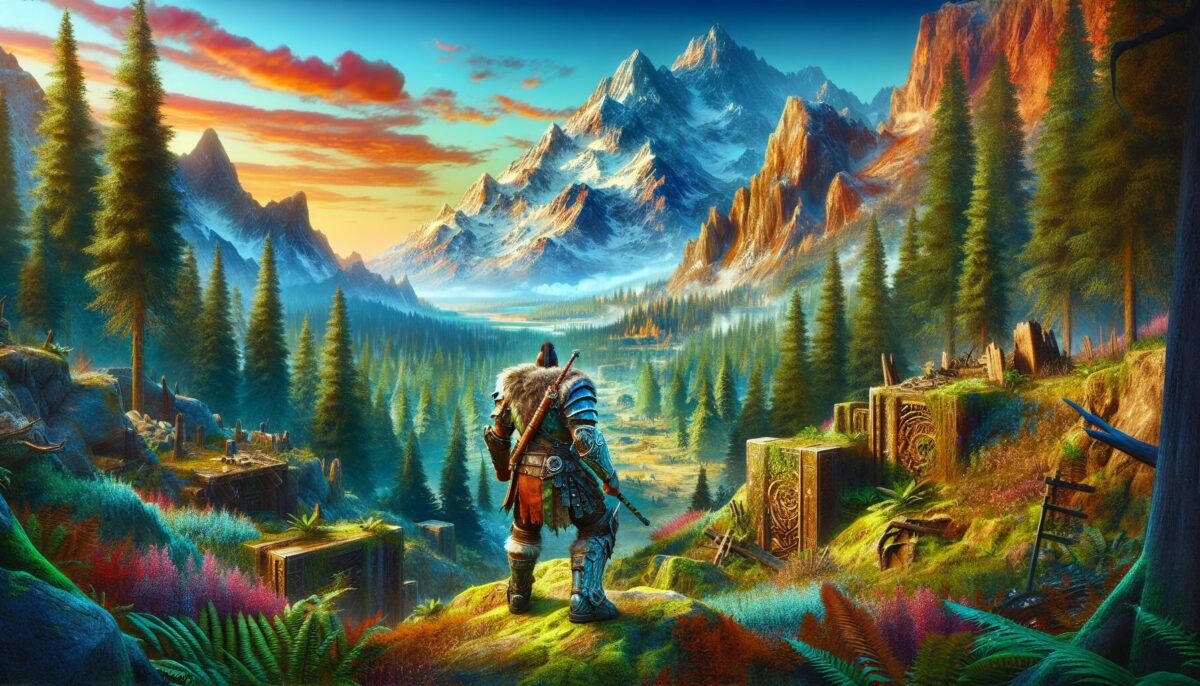The Witcher 3: Wild Hunt has been out in the wild for a few years now, but it remains a benchmark of what action role-playing games should aspire to be. With its vast open world, deeply nuanced characters, and complex narrative, it’s a game that continues to draw in new players while compelling veterans to return to its gritty yet beautiful medieval landscapes. If you’re a gamer and enthusiast who hasn’t yet taken on the mantle of Geralt of Rivia, here’s a rundown of what you’ve been missing—and why it might be time to dive in.
Developed by CD Projekt Red, The Witcher 3 is the finale in the trilogy of games based on the book series by Polish author Andrzej Sapkowski. In this installment, you play as Geralt, a monster hunter—or Witcher—on the search for his adopted daughter, Ciri, as she’s pursued by the otherworldly Wild Hunt. The game blends traditional fantasy elements with Slavic mythology and a touch of dark, morally ambiguous storytelling, making it stand apart from the more traditional high fantasy fare.
A Living, Breathing World
The open world of The Witcher 3 is often hailed as one of the finest ever crafted in a video game. Gigantic in scope and sumptuously detailed, it encompasses a range of environments from bustling medieval cities and sleepy hamlets to wild forests and stormy archipelagos. Each location is densely packed with quests, points of interest, and secrets to uncover, making exploration a reward in itself.
The level of detail extends to the world’s inhabitants. The NPCs (non-playable characters) of The Witcher 3 live according to day-night cycles and weather conditions. Townsfolk go about their business, reacting to Geralt’s presence in a variety of ways, based on his actions and reputation. This dynamic environment contributes to a highly immersive experience.
However, with such a vast world comes a potential downside: travel times between locations can be lengthy, and while there are fast-travel points, they can only be accessed after you have physically visited the locations. This can occasionally lead to some pacing issues within the narrative, especially when you’re eager to continue with the main storyline.
Engaging and Complex Storytelling
The narrative and quest design in The Witcher 3 goes above and beyond what most RPGs provide. The main quest is cinematic and full of impactful choices that influence the game world. Side quests are just as consequential and fleshed out; even the simplest of errands can unravel into a deep story with multiple outcomes. Your choices matter, and the game makes sure you feel the weight of your decisions.
The writing is exceptional, with multifaceted characters and dialogues that feel natural and real. Geralt, voiced by Doug Cockle, is a particularly compelling protagonist, gruff yet sympathetic, and capable of both great kindness and ruthless pragmatism.
Yet, for all its narrative strengths, The Witcher 3 isn’t without faults. Some players may find the game’s pace to be slow at times, with long stretches without major plot developments. This can be especially pronounced if one spends a lot of time on side quests.
Combat and Character Progression
Combat in The Witcher 3 is a blend of swordplay, tactical use of potions and oils, and casting Signs (basic magic spells). It requires you to prepare for battles by researching monsters, which adds an element of strategy to encounters. Geralt can also be customized through a skill tree that allows for varying play styles, from focusing on magic to perfecting his sword fighting abilities or crafting prowess.
Some players may find the combat system a bit clunky, especially during large battles where Geralt can feel unwieldy. The difficulty can be inconsistent too; the game can be punishingly hard or a little too easy, depending on your level and chosen difficulty setting.
Visuals and Sound
Graphically, The Witcher 3 remains a standout title. The level of detail in character models, environmental textures, and lighting effects is remarkable. The day-night cycle and dynamic weather system add to the ambiance, enhancing the sense of realism.
Coupled with the graphics is the beautiful soundtrack that perfectly complements the tone of the game. Whether it’s the haunting melodies that play whilst you’re traversing the swamps of Velen or the lively tunes in the taverns of Novigrad, the music is always spot on and enriches the gameplay experience.
Performance-wise, because of its high graphical fidelity, The Witcher 3 can be demanding on hardware, particularly if you want to experience it at the highest settings. Nevertheless, those with powerful gaming rigs or consoles will find a visually stunning experience awaits.
The Verdict
The Witcher 3: Wild Hunt is an epic and unforgettable journey that sets a high standard for open-world RPGs. Its vivid, sprawling world, engaging narrative, and deep character interactions offer an experience that is both emotionally and gameplay-wise rewarding. While it’s not without its faults in pacing, combat, and possibly performance for some players, the pros heavily outweigh the cons.
As a game review, it’s not just about recommending whether or not to buy the game. It’s about conveying the experience it offers. For The Witcher 3, it’s an experience that is rich, complex, and beautifully wrought—a testament to the art of video gaming. It’s a title that, even years after release, stands as a paragon of its genre, compelling players to revisit its stories again and again. If you haven’t yet walked the Path with Geralt of Rivia, there is no better time than now to do so.
